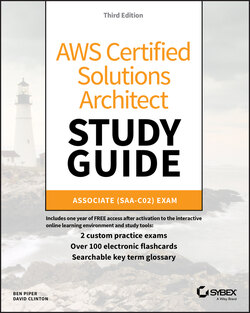Читать книгу AWS Certified Solutions Architect Study Guide - Ben Piper, David Higby Clinton - Страница 84
Health Checks Against Application Instances
ОглавлениеWhen you create an Auto Scaling group, Auto Scaling will strive to maintain the minimum number of instances, or the desired number if you've specified it. If an instance becomes unhealthy, Auto Scaling will terminate and replace it.
By default, Auto Scaling determines an instance's health based on EC2 health checks. Chapter 7, “CloudTrail, CloudWatch, and AWS Config,” covers how EC2 automatically performs system and instance status checks. These checks monitor for instance problems such as memory exhaustion, filesystem corruption, or an incorrect network or startup configuration, as well as for system problems that require AWS involvement to repair. Although these checks can catch a variety of instance and host‐related problems, they won't necessarily catch application‐specific problems.
If you're using an application load balancer to route traffic to your instances, you can configure health checks for the load balancer's target group. Target group health checks can check for HTTP response codes from 200 to 499. You can then configure your Auto Scaling group to use the results of these health checks to determine whether an instance is healthy.
If an instance fails the ALB health check, it will route traffic away from the failed instance, ensuring that users don't reach it. At the same time, Auto Scaling will remove the instance, create a replacement, and add the new instance to the load balancer's target group. The load balancer will then route traffic to the new instance.
A good design practice is to have a few recovery actions that work for a variety of circumstances. An instance may crash due to an out‐of‐memory condition, a bug, a deleted file, or an isolated network failure, but simply terminating and replacing the instance using Auto Scaling resolves all these cases. There's no need to come up with a separate recovery action for each cause when simply re‐creating the instance solves them all.
